
Candida Martinelli's Italophile Site

Main
Page This family-friendly site celebrates Italian culture for the enjoyment of children and
adults. Site-Overview
Visit my new Candies page
Dessert Cookbooks at my Italophiles Amazon Store
Easter Specialties
Variations on the Traditional Colomba Easter Colomba
Chocolate Easter eggs filled with toys or more chocolate!
Specialty Cakes with Cointreau and Profiteroles Christmas Panettone. If you can't find Panettone locally... For my list of Panettone at Amazon.com,
click on this logo: Christmas Pandoro di Verona. A light, orange and vanilla
flavored sponge cake. My favorite. And if you can't find Pandoro
locally... For my list of Pandoro at Amazon.com, click
on this logo: Italian Biscotti tend to be either dry and sweet (like the
Lazzaroni Amaretti above), or very moist and very sweet. For my list of Biscotti at Amazon.com, click
on this logo: Or you can bake some biscotti yourself.
Torrone is an egg-white and sugar nougat filled with nuts and candied fruit.
Some are peppery (the more traditional ones), and some are so sweet as
to cause instant diabetes, but wonderful all the same. For an idea
of the selection available, and to try some if you're not near an
Italian store... For my list of Torrone at Amazon.com, click
on this logo:
Finding
Specialty Items and Recipe Books Italian sweets tend
to be either light or heavy, but rarely in between. Generally, the
heavy ones, full of nougat, nuts, honey, dried fruit and sugar, are from
the North African-influenced South, and are diabetes-inducingly wonderful! Just a note: While I have many photos of Bauli products on this page, I do
not wish to promote their products over Motta's, Perugino's,
or Alemagna's, or any of the other producers. It's just
that they had great photos. Something that amazed me in Italy was how few people baked sweets at
home. Friends were always amazed that I could produce cookies and
cakes and puddings in my kitchen, without having a sweets-making
diploma. You should understand that in union-strong Italy, any
activity that has even a slight chance of producing an income, requires
a diploma. During the holidays, most gourmet shops will carry the holiday cakes,
or sweet breads, like those pictured on this page. Rarely are
these made at home. If you want to know why, click
here
to link to an Italian-American recipe site.
The link is set to their Desserts list from which you can select
their Panettone recipe. If you are like me, however, and are stubborn, a fan of home-baked sweets,
and own an electric bread machine, you might enjoy a recipe I've
created for a Pseudo-Panettone you can make with a bread machine. Click here to check it
out. On the same page is a recipe for Amaretti, because
you have to do something with those egg whites you leave out of the Pseudo-Panettone.
Yes, I'm economical. I said economical, not the "C"
word! Pizzelle are delicate, sophisticated cookies of ancient origin.
The batter is cooked in a waffle iron, and the hot cookie can then be
shaped into cones and roles for filling when they cool.
Think of an ice-cream cone that actually tastes like something
wonderful and not like plastic, and then you'll understand what a
pizzella is. Here is a
great page
off-site with recipes and instructions. If you are anti-labor enough want to bake Italian sweets in your
home...I've made pages dedicated to some Italian sweets that are wonderful
during the summer months because they are easy to make and refreshing to
eat. Each page has recipes and instructions and links to more
pages with more recipes and more instructions by other people. There is an Italian site that lists and describes all the
traditional Italian sweets in great historical detail, if you are
into that kind of thing. Click
here
to go to their Sweets and Confections list.
The only fault with the site is there are no photos of the sweets,
probably not to seem to promote one producer over another. You can link to a recipe site in Italy, set up by an
Italian woman, by clicking
here. She usually offers entertaining cultural background or
family stories with each recipe. I've set the link to her Desserts
list. You
can move easily from there to her other recipe categories. Salame Dolce
or Sweet Salami is a traditional Tuscan chocolate candy, easy to
make, tastes great. And check the last section on this page for more recipe links and
Crostate
(Tarts) Recipes. Wives' Tales Amaretti and Cantucci (or Biscotti di Prato) are
probably the best known Italian desserts abroad. Cantucci
are served with sweet dessert wine, usually Vin Santo. I
actually had an entire Italian family lunge at me over the dinner table
to stop me from eating them with water. They said I would die a
horrible death from stomach convulsions if I ever mixed sweets and water
together! They believed it, and like most Italian wives'
tales, it was said with such conviction, I actually believed them, for a
while anyway. Whipped Cream Binge You won't find much cream or butter in the recipes, except in the
sweets from the North of Italy. Many use olive oil or lard in
place of butter. Cream's rarity is the only explanation I have for
the strange behavior of some Italian friends one evening. Someone
had brought to a party a platter, from a bakery, piled high with
sweetened whipped cream. When it was uncovered at the table,
they all dug in with spoons and polished it off in a few seconds
flat! They thought I was strange when I explained that I was used
to eating cream on top of other things. It was not long after the
movie 91/2 Weeks had been released, so of course, someone kindly suggested
that I liked my cream on top of my men, and there then ensued an
imaginative discussion of my supposed "tastes"! Let's just leave it at that, shall we? Marzipan Lucky Pigs The pig-eating-the-cake icon at the top of the page is a reference to the European tradition
of giving marzipan, almond paste, pigs as a gift to bring good luck.
I learned this when a Swiss friend in Italy presented me with a marzipan
pig for my birthday. My crestfallen face told her I did not
understand the custom, and believed instead that it was a suggestion my
sweet tooth was adding to my waistline. The artistry is stupefying,
the bakers shaping and painting marzipan into all manner of things, like
in these photos.
For my list of Marzipan Fruit at Amazon.com,
click on this logo: Another candy my Swiss friend and I enjoyed every day
was a single Perugina Baci with coffee after lunch. Baci (kisses)
are a chocolate and hazelnut treat wrapped in pretty silver paper.
(See my fun "Italian Kisses are Sweeter" shirts
below,
available from my shop.) To find other Italian specialty sweets (or food), you can use this
Search tool.
Just enter 'Gourmet Food' in the 'Search' field, then
'Pandoro' (or whatever you are looking for) in the 'Keywords'
field. Then click on 'Go', to get a listing of what Amazon has on
offer, and at what price.
You can also search the 'Books' category
for 'Italian dessert recipes', for example.
Dessert Cookbooks at my Italophiles Amazon Store
Ancient
Rome loved itís sweets, many made with fruit, and sweetened with
honey
or a syrup made from grapes. The
sweets made in Italy today have precedents in Rome, such as cooked fruit
dishes, honey and almond candies, strudels, biscuits, sweet breads,
marmalade, and puddings.
The
Middle Ages saw a greater influence of Arabic sweets introduced in Sicily
and then quickly spread throughout the peninsula.
These are the unleavened sweets that are often a nougat holding
together nuts and candied fruit. Sweet
breads were also popular, often cooked with raisons and fruit.
Itís
during this time that the Arab sharbat became the Italian sorbetto,
made with wine, honey and fruit, and chilled first with the perennial
glaciers on Mount Etna in Sicily, and later in ice cellars, like the one
constructed under Palazzo Pitti in Florence by the Medici, just for their gelati.
It was during the time of the Medici that sorbetti became gelati
by adding milk and eggs to the ingredients.
By
the 1400s recipes can be found for baked custards, cheese cakes, rice
puddings, rice tarts, fried dough pastries.
Regional diversification of sweets is also a product of this time.
The Southern Italian regions held closely to the Arab sweets
traditions, while the Northern Regions embraced sweets made with cream,
pastries, butter and fruit.
Desserts
served after a meal are usually for special occasions.
It is more usual to end a meal with fruit, natureís candy, you
could say, than with a baked sweet. For
this reason, many Italian sweets are linked to holidays or seasons.
Check
my pages for recipes for creams-puddings,
custards-spoon breads, and
granita. The
Dating and Mating
page has a link to the original
Zabaione
recipe. On my Wine
page youíll find a link to a site with lots of Italian
liquori
recipes.
But
here Iíll put a recipe for one of my favorite Italian sweets, the crostata,
or tart. Here are recipes,
from my e-book, for the crust and some classic fillings.
cup melted butter cup sugar egg yolks tsp grated lemon rind tsp sweet dessert wine (such as Marsala or Vin Santo)
Add the butter to the flour. Add
the sugar, egg yolks, wine, and the lemon rind and work it quickly into a
dough. Form the dough into a
ball, wrap it in waxed paper and place it in the refrigerator for at least
1 hour. Remove, roll out, and
fit into the tart pan. Use all the dough, folding the sides in to make a thick edge
to the thick crust.
Crostata
di marmelata - Jam Tart: Spread the jam of your preference over the dough.
For a richer flavor, you can mix into the jam 1 tbsp of cognac or
another liquor. For this tart, reserve some of the dough and roll it into
thin logs. Place these in a
grid pattern over the jam. Brush
them with beaten egg. Cook
the crostata for approximately 15 minutes at a moderate temperature until
the crust is golden. Cool.
Crostata
di limone - Lemon Tart: Mix
together 2 eggs, 1 cup powdered sugar, 3 tbsp lemon juice, 1 grated lemon
rind, Ĺ tsp salt, 3 tbsp flour. Pour
into the crust and bake approximately 15 minutes at a moderate
temperature, or until the filling is firm.
Cool.
Crostata
di ricotta - Cheese Tart:
Mix together until creamy 1 cup of ricotta cheese, ľ cup sugar, 2
tbsp cream if needed to make a creamy texture.
Then add two eggs (you can whip the whites and fold them in last,
for a lighter texture), the juice and grated rind of one lemon, Ĺ tsp
salt. Put in the crust and
bake approximately 15 minutes at a moderate temperature, or until the
filling is firm. Cool.

Italian
Sweets, History, Recipes, Summer Sweets, Decorative Prints...
![]()
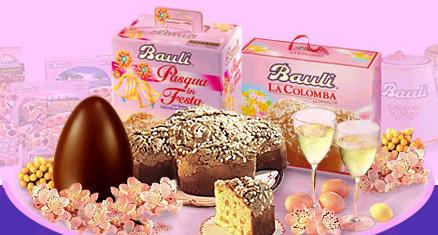
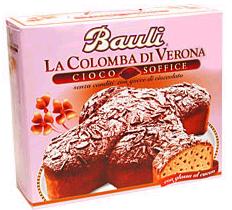
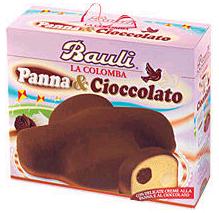
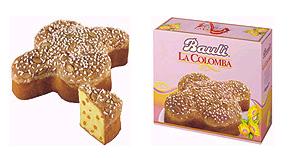
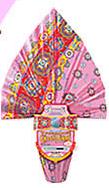
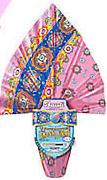
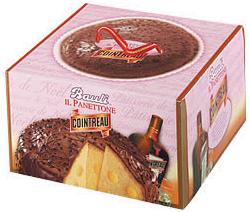
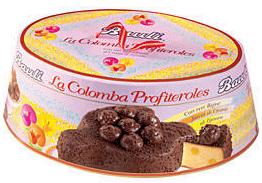
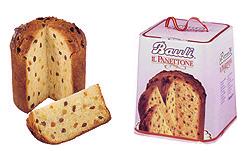
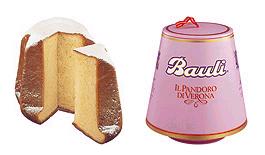
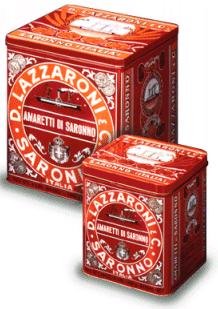
Introduction
Sweet Holiday Breads
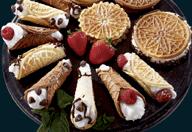
Summer Sweets
Sweets and Sweets Recipes
Some Sweets-Related Quirks


Finding Specialty Items and
Recipe Books




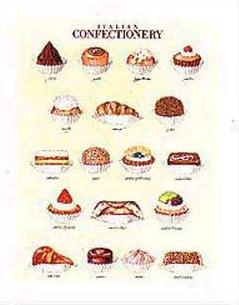 History
of Italian Sweets
History
of Italian Sweets
Recipes
- Crostate - Tarts

Crostata
Crust -
Tart Crust